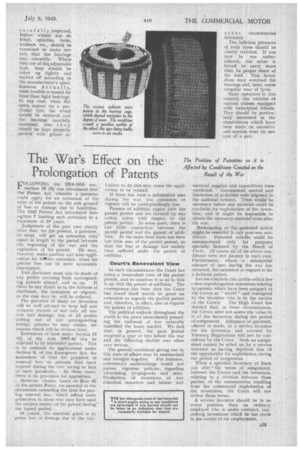Tyres May Fail Through Bearing Wear
Page 24

Page 25

If you've noticed an error in this article please click here to report it so we can fix it.
Investigations by the Goodyear Tyre and Rubber Co., of Akron, Ohio, Indicate that Loose, Worn or Rough Races are Particularly Prone -to Cause Flats on Tyres
ONE of the "Passing Comments ". published in . our issue, dated .. June .4 referred to worn wheel bearings as being a possible cause of tyre failure on trailers. Following this, we have received, through the kindness of Mr. A. S. Bishop, a -director . of the Goodyear Tyre and Rubber Co. (Gt.„Britain), Ltd., further details concerning this matter, which had just been sent to him by the American Goodyear Co., which has .carried out a considerableamount of investigation of this problem.
Its study of the conditions which cause fiat spots on tyres has defmitely .indicated mechanical irregularities in hub or axle assemblies. In America such trouble On trailer tyres is a constant source of difficulty with trailer operation throughout the country, and thousands of tyres yearly are prac
.tically ruined in this manner. •
Inspections made in the case Of a great number of them, and :of 'the trailers upon Which they were fitted, have shown that in at least ff0 per cent. of the 'cases spotty wear of the tread was traced to bearings with faults such as a roughened condition in. the channel of the inner race OT in the surface of the outer race. Similarly,' loose, worn or chipped bearings, worn cages, wavy, scored or loose races invariably produce flat spots on the tyres. In severe cases a tyre m4 be ruined in as shOrt a period as fourth six weeks. Thee spots may appear. on either the 'inside or outside tyre wheretwin tyres are fitted, but seldom on both. The condition is generally confuted to, trailers or 'semi-trailers, but it has been found occasionally on tyre'k used on other vehicles.
It is unfortunately• the case that faults in trailers are seldom reported by the drivers, at least in respect of mechanical irregularities.. Possibly this is forethe reason that mechanical defects are not so easily detected in a trailer, for a driver is not so likely to become as conscious of them as he would be when in a vehicle which he is actually_ driving.
However, it is not much use referring to the causes without giving some methods by which they can be obviated. A little attention given to the wheel 'bearings will avoid the trouble-making conditions, at, least until ordinary wear. takes its toll. Bearings' should .always be treated as precision ins,trurnents, and the use of the hammer to drive them on or oil should be emphatically discouraged. unless a protecting block be employed to take the blows.
A slight burr or dent on any part of: a bearing or race may cause failure. Bearings removed for inspection should be washed to remove all grease, and caref u I I y, inspected. Before ' wheels are refitted, spindles, races, washers, etc., should be examined • to make certain that the bearings
seat correctly. Where they are of the, adjustable type, they should be taken up tightly and backed off according to the manufacturer's specifications. A e tuall y, more trouble is caused by loose than tight bearings. In any case, when flat spots appear on a particular tyre, the wheel should be removed: and the bearings carefully examined, also t Ii c y should be kept properly packed with grease or
other recommended lubricant.
The inflation pressures of twin tyres should be closely watched. H one tyre be run underinflated, the other is forced to carry more than its proper share of the load. This factor alone may overload the bearings and, later, cause irregular wear of 'tyres.
Many operators'in this country run vehicles of various classes equipped with twin-tyred wheels. They should be particu• lady interested in the observations which have been made on excessive and uneven wear on one tyre of a pair.




















































